16.08.2022
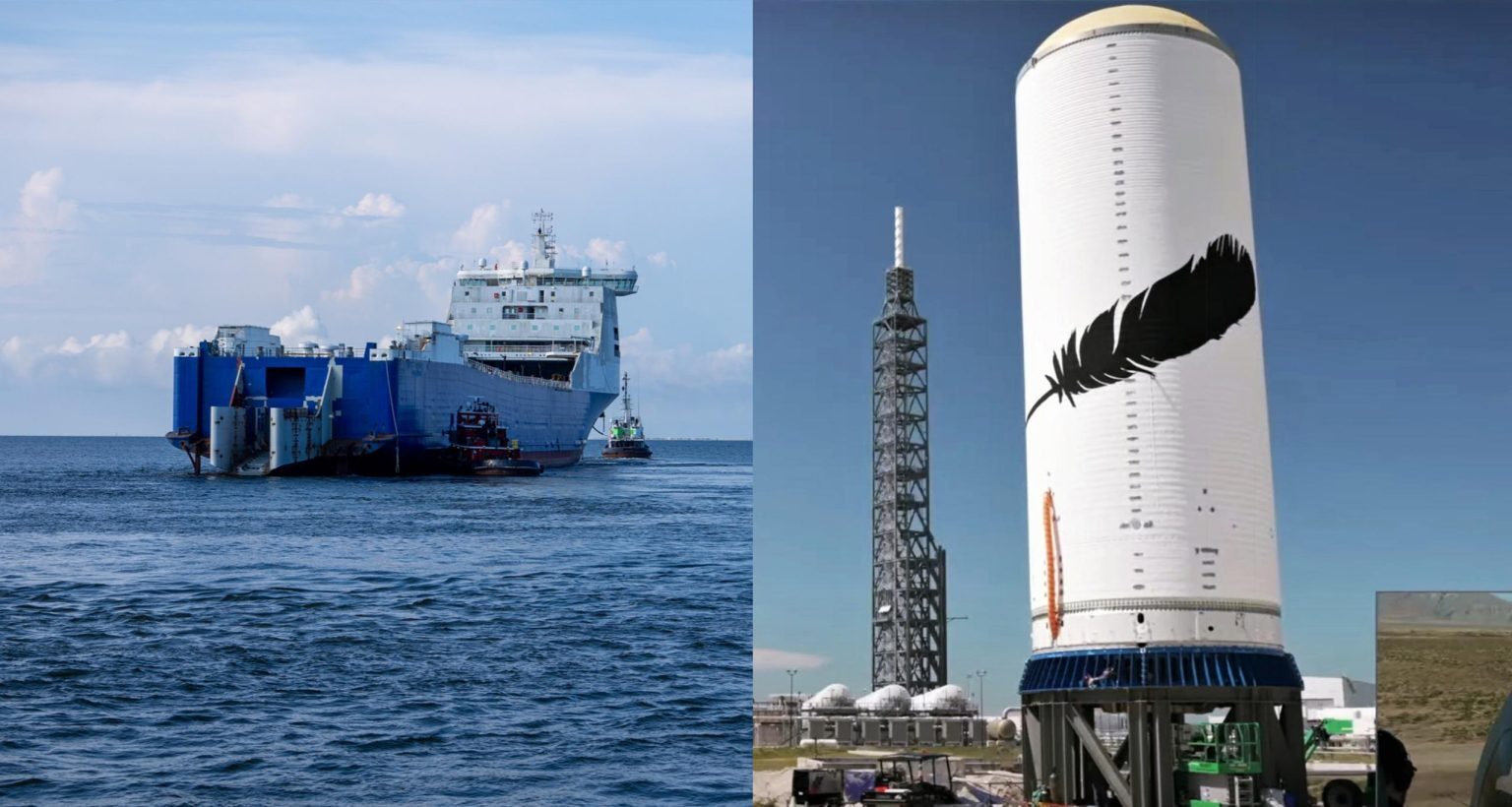
After four years of halting work, Blue Origin has fully abandoned a transport ship it once intended to convert into a landing platform for its orbital-class New Glenn rocket.
Known as Stena Freighter at the time of sale, Blue Origin purchased the ship for an undisclosed sum – likely several million dollars – sometime in mid-2018. Aside from a flashy, December 2020 re-christening ceremony in which Blue Origin owner Jeff Bezos named the vessel Jacklyn after his late mother, the private aerospace company left the ship largely untouched in a Florida port. Small teams of workers would occasionally work on retrofitting the roll-on/roll-off cargo ship for a future life as a rocket recovery asset but made very little visible progress despite working on Jacklyn for several years.
Now, a few months after a Blue Origin spokesperson first acknowledged that the company was evaluating “different options” for New Glenn booster recovery, Jacklyn has left Florida’s Port of Pensacola for the Texan Port of Brownsville, where documents show that the ship will be scrapped.
According to an unconfirmed report, Blue Origin may ultimately use the same contractors as SpaceX to turn existing barges into ocean-going rocket-landing platforms. Blue Origin had hoped that a large, keeled ship would allow it to launch New Glenn and still recover its expensive booster even if seas were stormy downrange. However, after 107 successful SpaceX Falcon booster landings on flat-bottomed barges that are exceptionally sensitive to wave conditions, just a tiny fraction of launches have been delayed by the ocean. Further, SpaceX has only lost one booster to waves, and it solved that problem by developing a relatively cheap robot. With the benefit of hindsight, it’s not hard to see why Blue Origin changed its mind.
Much like SpaceX’s next-generation Starship rocket, Blue Origin began work on its semi-reusable New Glenn rocket in the early 2010s. Jeff Bezos publicly revealed New Glenn just a few weeks before CEO Elon Musk’s long-planned September 2016 reveal of SpaceX’s next rocket, then known as the Interplanetary Transport System (ITS). Both were massive, meant to be powered by huge new methane/oxygen-fueled engines, and designed from the ground up with some degree of reusability in mind.
But with fairly different designs and wildly different development philosophies, the paths of Blue Origin and SpaceX have only gotten further apart over the last six years. SpaceX thoroughly redesigned its next-generation rocket multiple times before throwing out a large portion of that prior work and settling on an unexpected stainless steel variant that CEO Elon Musk christened Starship in late 2018. Further differentiating the companies, SpaceX began work on steel prototypes almost immediately and successfully built and flew a scrappy pathfinder – powered by an early version of the same Raptor engine meant for Starship – less than a year later.
SpaceX then improvised a factory out of a series of tents and began churning out and testing dozens of more refined prototypes, seven of which would go on to perform flight tests between August 2020 and May 2021. SpaceX’s last test flight ended with a full-size steel Starship prototype successfully landing after launching to an altitude of 10 kilometers (~6.2 mi). Testing slowed considerably after that success but SpaceX appears to have begun ramping up again as it begins to test a Starship (S24) and Super Heavy booster prototype (B7) that have a shot at supporting the rocket’s first orbital launch attempt.
That orbital launch debut has been more or less continuously delayed for years and is about 20 months behind a tentative schedule Musk first sketched out (albeit for a drastically different rocket design) in 2016. Technically, the same is true for Blue Origin, which also said that it intended to debut New Glenn as early as 2020. However, while SpaceX can point to the instability of Starship’s design before 2019 as a fairly reasonable excuse for delays, the general characteristics of New Glenn’s design appear to be virtually unchanged despite its many delays. The smaller rocket – 7m (23 ft) wide and 98m (322 ft) tall to Starship’s 9m (30 ft) width and ~119m (~390 ft) height – will still use traditional aluminum alloys for most of its structures, will be powered by seven BE-4 engines, will land on several deployable legs, will have an expendable upper stage powered by two BE-3U engines, and will be topped with a large composite payload fairing.
Blue Origin canceled plans for a smaller interim fairing, abandoned plans to land the booster on a moving ship, and tweaked the booster’s landing legs and a few other attributes, but New Glenn is otherwise (visibly) unchanged from its 2016 reveal. Ultimately, that makes it even stranger that Blue Origin has done practically zero integrated testing of any major New Glenn components. Only in 2022 did the company finally complete and test a New Glenn payload fairing. Blue may have also built and tested a partial booster interstage, which the New Glenn upper stage will attach and deploy from.
But the true star of the show, at long last, is an apparent full-scale prototype of New Glenn’s upper stage. At minimum, Blue Origin’s first ‘test tank’ (using SpaceX parlance) should allow the company to finally verify the performance of New Glenn’s aluminum tank barrel sections and domes under cryogenic (ultra-cold) conditions. It’s unclear how (or if) Blue Origin intends to complete integrated static-fire testing of New Glenn’s upper stage before the rocket’s first launch, but it’s possible that the tank it finally delivered was designed to support testing with and without engines.
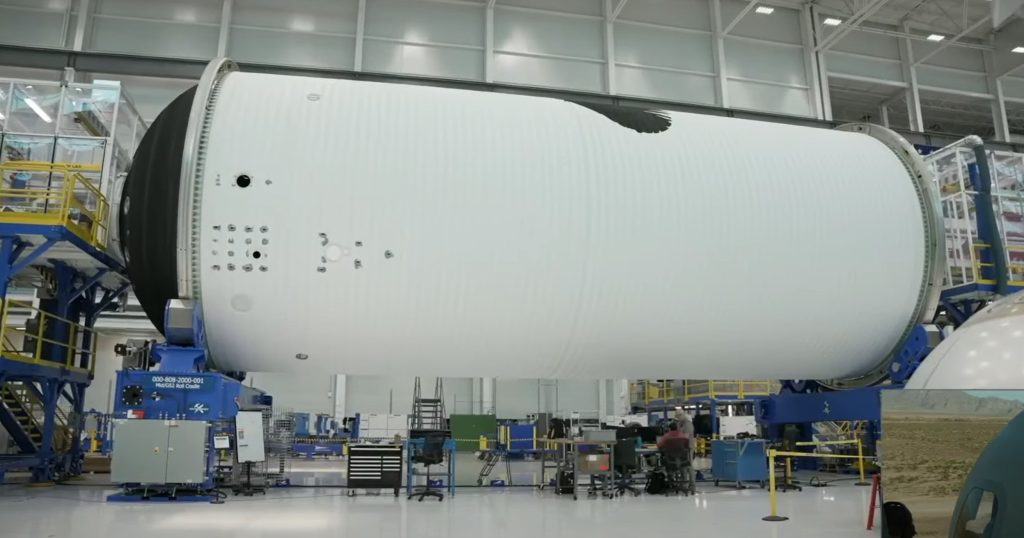
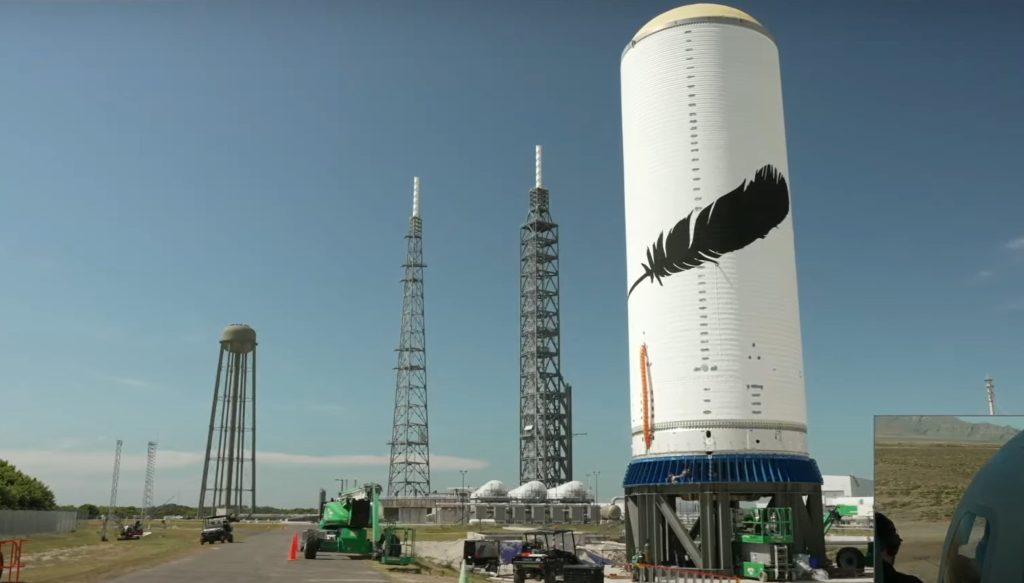
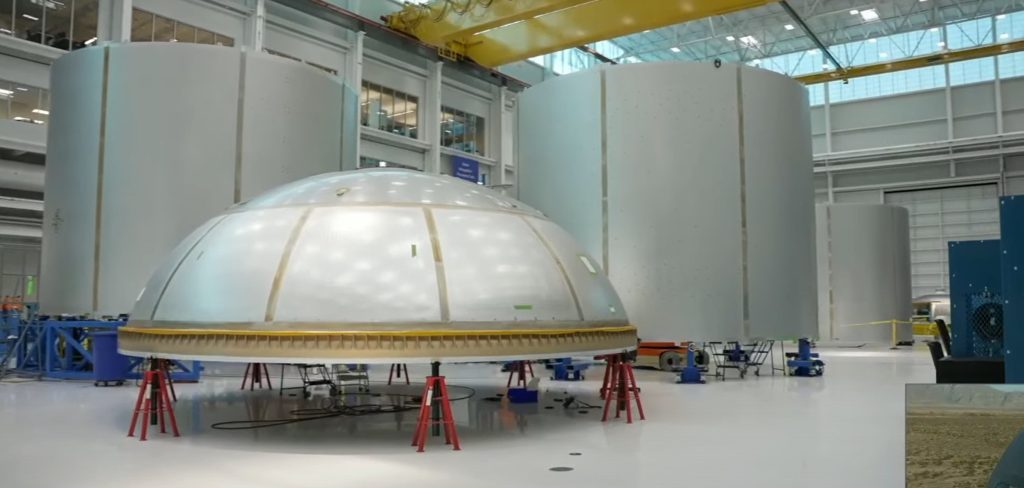
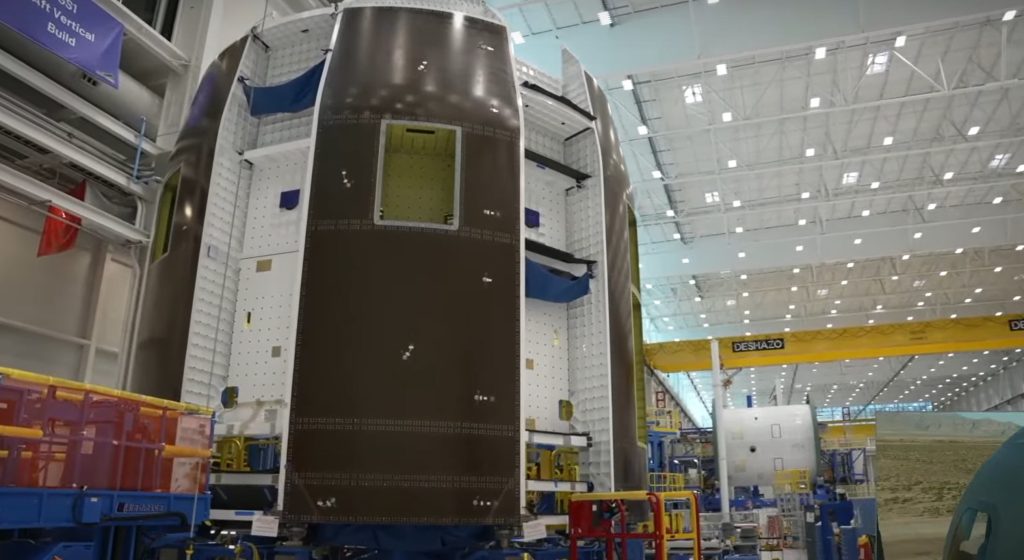
Nonetheless, Blue Origin hasn’t specified what it actually plans to do with its first New Glenn test tank and it’s even less clear why it has taken the company so long to complete one. While difficult, the methods Blue Origin is using to build New Glenn’s primary structures are about as standard as they get for modern rockets. Blue Origin itself even uses the same tech to build its smaller New Shepard rockets. So does SpaceX, ULA, Boeing, Arianespace, and virtually every other manufacturer of medium-to-large rockets, including NASA’s Space Launch System (SLS) core stage, which is wider than New Glenn.
The results of those challenges (managerial, technical, or otherwise) are clear: Blue Origin is nowhere close to debuting its next-generation rocket while competitors like Arianespace and ULA are tracking towards H1 2023 debuts of their Ariane 6 and Vulcan rockets. SpaceX, who is pursuing full reusability and really only settled on the design of its larger rocket in 2019, could even be ready to attempt an orbital-class launch with Starship before the end of 2022.
Still, the long-awaited beginning of hardware-rich New Glenn development appears to have finally arrived, and it’s possible that Blue Origin’s first orbital-class rocket could finally start picking up momentum towards its launch debut.
Quelle: TESLARATI
